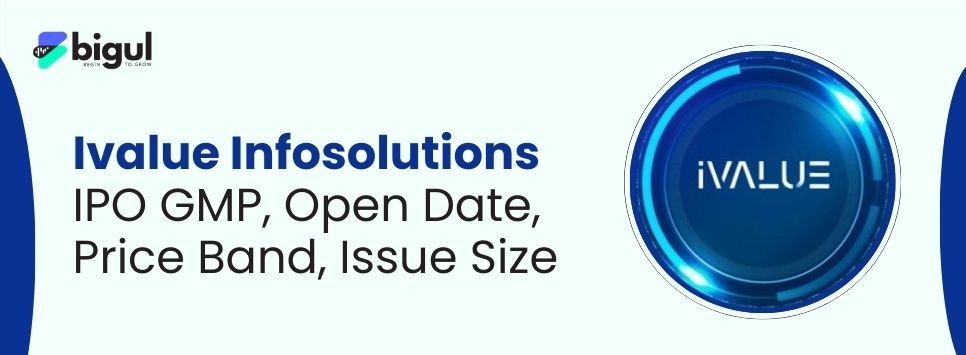Stock trading in the market tends to demand greater amounts of capital than that of a trader who has the cash at hand. It is here that the leveraging tools find their use. Margin Trading Facility (MTF) and the Pledging of shares are two strong and widely used tools that enable a trader to boost one's purchasing power. Though both techniques offer access to additional funds, they operate in distinct manners and are appropriate for distinct types of traders and trading situations.
This article will give an in-depth, yet easy-to-understand, explanation of these two amenities, digging into their definitions, primary distinctions, and when it's optimum for one to utilise each of them. This manual will assist an investor in knowing how to employ such instruments safely and efficiently to maintain one's investments. The trader/investor should always know enough before employing such financial instruments so as not to get into potential pitfalls.
What is a Margin Trading Facility (MTF)?
Margin Trading Facility (MTF) is a unique SEBI-regulated product under which a trader is allowed to buy new shares with very little cash. Another name given to this facility is E-margin or "Pay Later." MTF permits traders to purchase stocks by paying just a part of the total amount upfront. The broker finances the rest.
Example of Margin Trading Facility MTF:
For instance, if a share costs ₹800 and the leverage permitted under MTF is 4x, then one only has to pay ₹200, and the broker will pay the remaining ₹600. This gives the trader an ability to purchase more shares than using only one's own money. The only difference with MTF is that pledging of investor's shares is required and this must be done under time requirements. The instant a trader purchases shares via MTF, he/she is required to mandatorily pledge them back to the broker. They have to do this by a deadline, typically 9:00 PM on the same day they acquired the shares.
What if Shares are Not Pledged Back to The Broker?
In case the investor does not fulfill this requirement, the shares will be sold automatically, or "squared off," by the broker the following morning. This is an important regulatory provision to ensure that the money lent by the broker has collateral.
MTF is a useful method for short-to-medium term trading because traders can hold positions for many days or weeks, unlike intraday trading where a trader has to close positions by the end of the day. The catch with MTF is that the trader is borrowing money from the broker, and they will be charged a daily interest on the borrowed amount. The interest rates typically range from 9% to 15% per annum. A one-time pledge/unpledge charge also applies to these transactions. The list of shares eligible for MTF is regulated by SEBI and also determined by individual brokers. This also assists in managing risk for both the broker as well as the trader.
What is a Margin Pledge?
A margin pledge is a facility that allows traders to utilise their current shares as collateral to obtain extra trading funds. It is something that can be imagined as borrowing money from a broker, but rather than using cash as collateral, the trader pledges the current investments. This is a wonderful means of tapping into the value of one's portfolio without selling shares. The procedure is easy. The trader simply logs into his trading account or on the broker's website and selects the shares that he/she wants to pledge. These shares are then kept by the broker as collateral. The broker will then give the trader an amount called, a margin, that can be used to trade.
A key concept here is the "haircut." The broker will not give a trader the market value of one's pledged shares. They will take a percentage off, or a "haircut," from their value. This is an important risk management tool for the broker.
Example of Margin Pledge and Haircut Percentage
Let us consider an example. Suppose one hypothecates shares of ₹100,000 and the haircut is 25%. Then, traders will receive a trading margin of only ₹75,000. The haircut percentage is dependent on the share's volatility and liquidity. This haircut is a safety buffer for the broker in case the price of the share crashes suddenly. This margin can be utilised for all sorts of trading purposes, such as purchasing additional shares, trading in futures and options, or intraday trading. This system provides a trader with tremendous flexibility to increase their trading positions without selling their long-term holding.
To make this procedure transparent and safe for investors, SEBI has implemented stringent norms. When a trader starts a pledge, his or her shares are not automatically transferred to the broker's account unless they give their clear consent. The trader is sent a link by the depository (CDSL/NSDL) through which they sign on to pledge using an OTP. The pledge is normally done in one business day, and a one-time charge, usually ₹20 plus GST per company, is made for every pledge application. This cost should be added to the investors' trading expenses.
Distinctions Between Margin Trading Facility (MTF) and Margin Pledge
While both margin pledge and MTF involve using shares as collateral, the purpose, mechanism and costs are fundamentally different. Understanding the differences is important for a trader to be able to choose the right product for their trading style or strategy.
|
Feature |
Margin Trading Facility (MTF) |
Margin Pledge |
|
Capital Source |
The broker lends the money for the transaction. Trader only pays a fraction of the value up front. |
The margin comes from one's current holdings. Trader is merely tapping the value of one's own portfolio. |
|
Purpose |
To purchase new shares and have a bigger position than one's cash balance would support. |
To borrow additional trading funds from one's current investments without selling them. |
|
Pledging Rule |
Rules apply for limited time for shares acquired with MTF. If someone does not pledge, the shares are sold. |
Optional. Trader decides which of his/her existing shares to pledge and when. |
|
Costs |
Trader is charged daily interest on the money borrowed. A one-time pledge/unpledge fee also applies. |
Trader is charged a one-time fee for pledging, but there is no daily interest on the money itself. |
|
Shares Used |
Only certain approved shares from a list sanctioned by SEBI and the broker. |
Applicable to a larger range of approved investments the trader holds, such as stocks, mutual funds, and |
|
Leverage |
Can provide considerable leverage (e.g., up to 4x) depending on the broker and stock. |
The margin received by the trader depends on the worth of one's pledged shares after the broker's "haircut." |
|
Risk |
If the price of trader's MTF position declines significantly, one will receive a margin call. If one can not pay for it, then the shares will be sold. |
A decline in the price of the pledged shares can also produce a margin call. If trader is unable to pay, some of the pledged stock may be disposed off. |
When to Use Margin Trading Facility (MTF)?
MTF has been crafted for professional traders who prefer to leverage their exposure and benefit from market volatility with limited initial capital. It is the optimal selection when:
Trader has located a short-term opportunity:
One believes in a stock's short-to-medium-term direction and wishes to maximise one's possible profit. MTF allows one to buy shares more than the cash would otherwise allow.
Trader desires to roll over one's position:
MTF enables one to maintain one's shares for a longer time frame, which is ideal for swing traders.
Trader requires immediate leverage:
MTF is an institution that provides immediate access to leverage. This enables one to move rapidly on quick-moving market opportunities.
Tarder is comfortable with daily interest charges:
Because one is taking money on loan, one needs to be prepared to pay a day's interest charge, which means that MTF is only suitable for short-term trades where the profit can readily absorb the cost of interest.
When to Use a Margin Pledge
The margin pledge is a wonderful instrument for investors and traders who have a large portfolio of current securities and need to add more trading capital without selling one's long-term holdings. One should think of utilising a margin pledge when:
Trader has a long-term investment strategy:
One thinks one's current shares will increase in value and doesn't want to sell them, but one finds a new trading opportunity and requires cash.
Trader is a seasoned investor:
One is not a daily trader but requires extra money on some occasions for short-term transactions or to trade futures and options.
Trader desires flexibility:
A margin pledge is more flexible in that the margin can be applied to other types of transactions and is not specific to a particular buying facility such as MTF.
Trader is not in a rush:
The pledging of shares and acquiring money can take time to complete.
Conclusion
Whether to use MTF or a margin pledge is based purely on the trader’s trading goals, ability to take risks, and need. MTF is used to buy new shares, while a margin pledge is used to leverage the value of already owned investments. It's important to know the risks of each. When the price of one's shares falls significantly, it can create a margin deficit. The broker will subsequently make a margin call, which is a warning requesting one to deposit more funds in one's account. In the event that one does not do this, the broker can sell one's shares in order to recover their money. Careful use of these tools is essential. Accordingly, to properly manage one's investment and risks, a thorough knowledge of every service is very important. Always watch the market and one's portfolio to not use too much leverage.
FAQs
1. What is Haircut in Margin pledge?
The broker will not give a trader the market value of one's pledged shares. They will take a percentage off, or a "haircut," from their value. This charge is called haircut and is meant for broker’s safety against declining price of the share pledged.
2. What are the costs involved with MTF and Margin Pledge?
In MTF, the broker charges daily interest on the borrowed sum and a one-time pledge/unpledge fee. While in Margin Pledge, only a one-time pledge fee per stock is applicable.
3. Which stocks are eligible for MTF or Margin Pledge?
Only SEBi-approved stocks are eligible for MTF. Whereas a range of investment instruments held in the traders demat is applicable for Margin Pledge, like stocks, bonds, MFs, ETFs etc.
4. Can a trader use both MTF and Margin Pledge together?
Yes, there is no rule against the use of these pledges together but it is advisable that the trader applies caution while making such pledges.

.jpg)






.jpg)
.jpg)
